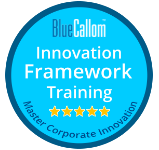Overview
1 Executive Commitment
2 Innovation Origin Model
3 Innovation Definition
4 Innovation Budgeting
5 Neuro Influence
6 Innovation Teams
7 Innovation Culture
8 Markets
9 Execution
10 Metrics
Independent of various methods, team assembly, and organizational structures, we identified several principles that can be considered essential principles for any corporate innovation initiative. Doing the counterfactual, we can say:
- EXECUTIVE COMMITMENT
Innovation teams play in a vacuum with almost no chance of being successful. Billions have been invested, but genuine innovations have yet to be created. - INNOVATION ORIGIN
Innovations with impact and exceptional economic success have always originated from a big problem somebody solved – never from random ideas. - INNOVATION DEFINITION
In general Innovation is a solution that elevates hoe people or organizations do thongs that have not been possible before. Inventions or Improvements are no Innovation. - INNOVATION BUDGETING
Innovation budgets are investments into the future of the corporation. R&D money is spent on maintaining existing solutions. Mixing both is a terrible mistake. - NEURO INNOVATION
Knowing how the brain composes complex breakthrough ideas is the key to intelligent and manageable innovation development. Without that knowledge, you are doomed to experimentation. - TEAM
With the new depth of understanding of innovation, it becomes apparent what skills a team needs to have to succeed. It may come as a surprise that the key drivers are eight specific cognitive abilities. - CULTURE
It’s important to understand that corporate cultures are partly built on the trust that optimized business processes are followed to be successful. Innovation culture is asking to question everything. - MARKET DYNAMICS
From start to global recognition is usually a long way of seven and more years of relentless execution. The timing needs to be accepted because it is dictated by the larger group of market players, which are very conservative. - EXECUTION
Every successful innovation was thought through, from a vision to a detailed execution plan. Instead of a step-by-step thinking a holistic approach is mandatory to be successful. The primary success factor remains to be relentless execution.
- METRICS
With a robust understanding of the innovation principles, methods for strategy and execution, and a well-thought-out organization model, innovation process-specific data can be defined and success relevant KPIs created that was not possible before.



